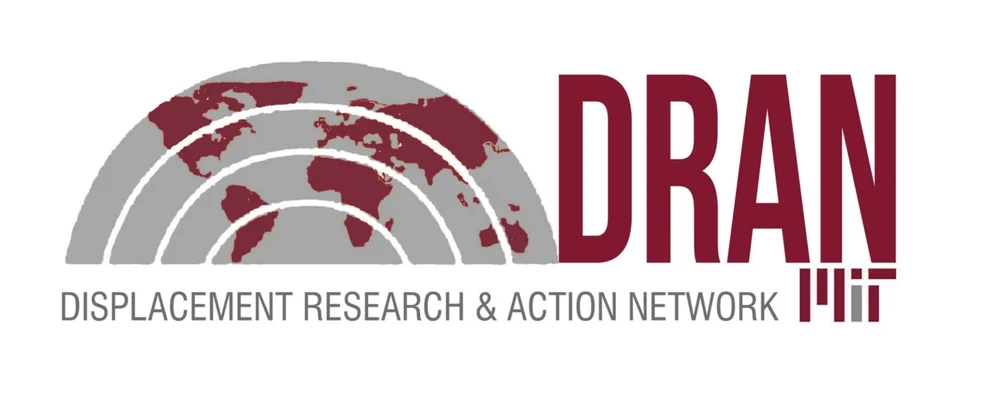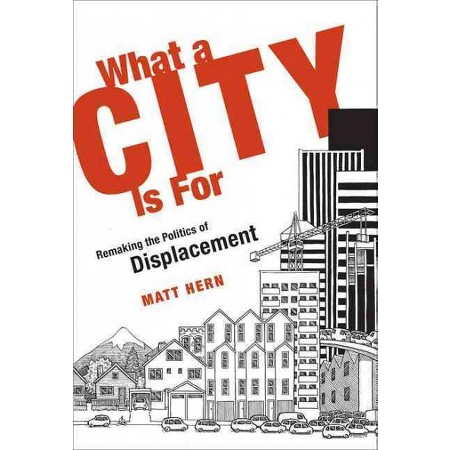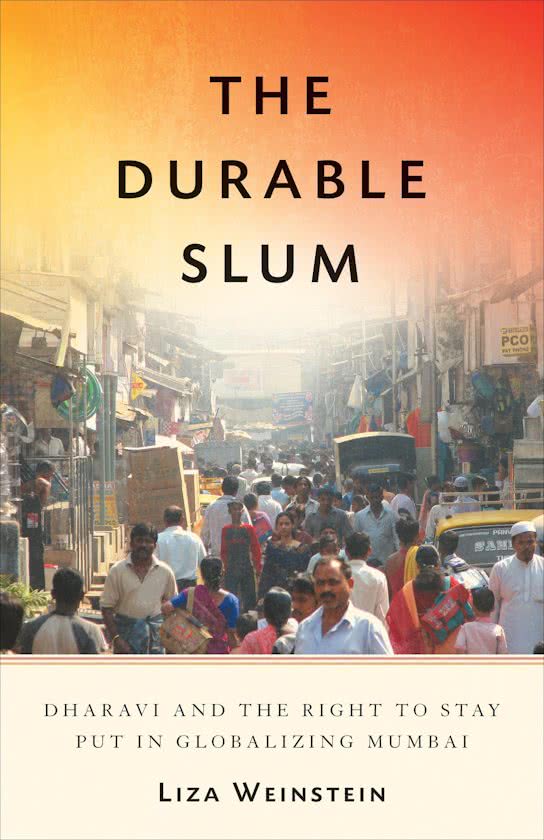Displacement: Reflections and questions
Sai Balakrishnan
Associate professor of urban design at harvard gsd, dran faculty affiliate
& Nick Blomley
Professor of Geography at Simon Fraser University, Canada
This virtual symposium was initiated by Professor Rajagopal Balakrishnan, Founder of DRAN + Professor of Law and Development and Head of the International Development Group at the Department of Urban Studies and Planning, who noted the number of recent books that grappled with questions of displacement in the Global South and North. Given the focus of the Displacement and Research Action Network (DRAN), this prompted us to contact several authors to invite them to participate:
*Click on the above images to read featured pieces by the authors.
Authors were invited to submit a short response to the questions:
- What is the central argument of your book?
- Why and how ‘displacement’? What original insights (empirical, conceptual, normative, methodological) does your book provide in regard to the question of ‘displacement’? Is displacement a useful category (as compared to alternatives, such as dispossession, expulsion, exclusion)?
Several commentators (Ananya Roy, Tania Li, Richard Schragger, Oren Yiftachel) were subsequently asked to read the individual responses and then provide general responses, responding to questions such as: Why so much interest in displacement now? -What does this literature tell us? Is displacement a useful category? How can we think globally or comparatively about displacement? Over and above the opportunity to introduce the individual books, our hope is that the conversations open up some interesting reflections, generating both a deeper understanding of displacement issues across geographical contexts as well as shaping agendas for future research and action. Overall, several issues seem to come to the fore:
a) Comparative displacements:
Many respondents note the utility of comparing and connecting displacements, rather than treating them as singular events. So, for example, Tania Li places urban displacements in conversation with rural struggles, Loretta Lees underscores the relevance of ‘mega-displacements’ operating globally, while Matt Hern insists on the need to situate contemporary forms of racialized banishment within processes of colonial dispossession. However, Matt refuses to treat gentrification-induced displacement as commensurate with colonial displacement, raising important questions regarding the dangers (both ethical and analytical) of generalization. Oren Yiftachel urges us to move beyond a comparative analysis towards new conceptualization from the‘southeastern’ perspective. He sees these views from the ‘southeast’ as a corrective to the “too narrow and at times distorted” universalisms of a scholarship that relies almost exclusively on the experiences of non-northern, non-western cities.
The monographs in our blog analyze displacement in the context of the United States and India and it would have been instructive to expand our scope of comparison to countries like Brazil, Colombia and South Africa, which at least in the spirit of the law, have strong normative commitments to the social obligation norm of property. The themes raised also draw on historical continuities and force us to ask how contemporary experiences build on, but are different, from the past. For instance, in response to Asher Ghertner’s work on the “rule by aesthetics,” Richard Schragger reminds us about urban renewal in post-WW2 U.S., where aesthetic considerations of blight violently decimated poor immigrant neighborhoods. Tania Li also recalls Scott’s searing critique of “high-modernism” aesthetics that lined up “crops, worker houses, and workers in neat rows.” Reading these books then opens up a comparative (or transnational) lens not just on displacement across geographies, but also across time.
b) Displacement as analytic:
Participants had varying responses to the utility of the term ‘displacement.’ Displacement is a political concept because it pushes back against the seemingly neutral policy reports that use terms like urban development, regeneration, productive citizens, etc. without acknowledging the normatively freighted assumptions underlying these concepts. Naming itself is a normative activity: how we frame urban problems presupposes our solutions to them. The use of the concept of displacement then makes visible the invisible ideological underpinnings of urban policy. Gautam Bhan argues that using the concept of displacement is a “testament to the narratives of anti-eviction movements and struggles and not ceding to other substitutes such as “improvement,” or “redevelopment are a key part of refusing a flattening narrative of urban transformation, change, renewal and development.” Lees categorically argues that “displacement of low income groups is gentrification; it is not as it is often pedalled to the public – ‘urban regeneration’, ‘urban (re)development’ or ‘urban renewal’.” Drawing from his work on the contested geographies of Palestine, Yiftachel uses the concept of ‘displaceability’ rather than displacement to foreground the importance of time in these processes; these range from historical claims that legitimize displacement (like the Jewish narrative that “Palestines have encroached what was, and what will be, a Jewish city”) to the precarious status of newcomers subjected to violent and ‘legalized’ displacement.
The authors pointed to the analytical traction of the term ‘displacement’ vis-à-vis other cognate terms like dispossession and expulsion. Tania Li noted the value of displacement, as opposed to expulsion, given its longer term, incremental nature, echoing Liza Weinstein’s examination of the ‘durable precariousness’ of Dharavi. Matt Hern suggests that “emplacement is the answer to (or the antipode of) displacement,” a view that Loretta Lees echoes when she argues that displacement is much more than spatial dislocation, but signals the multiple ways in which ‘place is made and unmade’, and thus directing our attention to the manner in which displacement can fragment or shatter identity and meaning.
c) The how of displacement:
The commentaries direct us to the important question of how displacement actually unfolds and how it is sustained. Rather than reductive invocations (to capitalism, or neoliberalism, for example), the authors and respondents encourage us to focus on the particular mechanisms and logics that authorize, generate, and naturalize displacement. So, Ananya Roy insists on the importance of state violence; Asher Ghertner traces the shift from ‘rule by records’ to ‘rule by aesthetics’ in Delhi; Richard Schragger notes the contradictory role of law; and Gautam Bhan points to the particular role of ‘Public Interest Litigation’ and the judicialization of governance in Delhi. This is salutary: if we are to understand displacement, and respond intelligently to it, it is necessary to know the generalized and geographically specific ways in which it is made.
At a time when countries around the world are mired in displacement conflicts with intertwined roots in both class and identity politics, these commentaries crucially emphasize that displacement is refracted through geographically specific identity markers. Roy defines displacement as the “forced removal of people of color,” and both Hern and Schragger are emphatic that the displacement of a middle-class white family (a la Suzette Kelo) is not the same as the displacement of a low-income person of color from an SRO, and “none of it is the same as people across the globe who have been dispossessed of their land by colonial violence.” These struggles fundamentally differ in their conception of property rights, with the former being able to mobilize pro-property conservatives to their side and the latter fighting against precisely these forms of property norms.
d) The ethics of displacement:
The comments are also useful on allowing us to reflect on the ethical dimensions of displacement. To characterize the movement of people as a displacement is to suggest, at minimum, a disjuncture or, more significantly, a profound harm or wrong. How then do we evaluate the ethics of displacement? What does displacement do that is harmful? And how might a ‘right to stay put’, as Weinstein notes, best be contested? Usefully, the conversation below points to some ambiguities in these difficult questions. Matt Hern, for example, reminds us that the defense of one beleaguered community to occupy and use space may collide with the claim of another group, particularly when foundational moments of colonial dispossession are recognized. Liza Weinstein also suggests that we should be cautious in insisting on the right to stay put, noting the way in which this can effectively entrap residents.
Sai Balakrishnan is an Assistant Professor of Urban Planning at Harvard University’s Graduate School of Design. Prior to that, she was an Assistant Professor in International Development at the Edward J. Bloustein School of Planning and Public Policy at Rutgers University, and served as a Postdoctoral Scholar at Columbia Law School’s Center on Global Legal Transformations. Balakrishnan has also worked as an urban planner in the United States, India, and the United Arab Emirates, and as a consultant to the UN-HABITAT in Nairobi, Kenya; and has served as a Research Fellow at the Land Governance Laboratory (LGLab), a Cambridge-based not-for-profit organization, which studies and disseminates tools for inclusive land resource allocation in rapidly urbanizing countries.
Through her research and teaching interests, Balakrishnan focuses on institutions for managing rapid urbanization and the politics of land-use planning. Her work has been published in Pacific Affairs (for which she won the outstanding article published in 2013) and in two edited volumes on India’s political economy (Cambridge University Press) and on informal real estate markets (Penn Press). She is also currently developing a book manuscript on the rapid urbanization and land conflicts along the new economic corridors in India and the governance and distributional implications of these urban transformations.
Balakrishnan holds a Master’s Degree in City Planning from MIT, a Master’s Degree in Urban Design from the University of Michigan, and a PhD in Urban Planning from Harvard University. Her doctoral dissertation was awarded the 2014 Association of Collegiate Schools of Planning (ACSP) Gill Chin Lim Award for Best Dissertation on International Planning.
Nicholas Blomley is Professor of Geography at Simon Fraser University, Canada. He has a longstanding interest in the geographical dimensions of law, particularly real property. Displacement - including its effects and geographic dimensions, its multiple forms, community mobilization, the role of law - are central to his work. He has recently completed a project on a treaty process in Canada involving the state and First Nations, and is currently a participant in a major initiative examining the liquidation of Japanese-Canadian property during World War II. He is the author of several books including, most recently, a coedited volume entitled: ‘The expanding legal spaces of law: a timely legal geography’ (Stanford UP).







